Kim and I were in Texas last weekend for her latest ultramarathon race. It was a brutally hot day at Possum Kingdom Lake, a couple hours west of Fort Worth. The race started at 6am, though, when it was still pleasantly – but very temporarily – cool. After Kim and the other runners started down the trail, I spent an hour or so with my camera before I had to head to the first aid station to hand water and food to my wife.
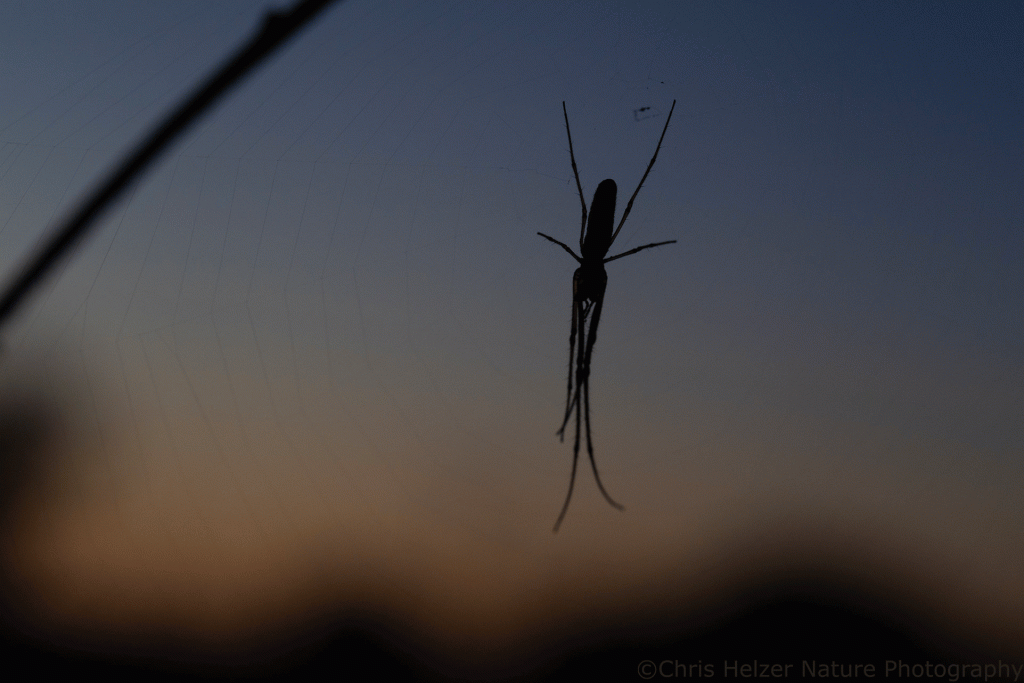


I started my day with spiders. Before sunrise, I was looking for webs to silhouette against the thin line of color on the horizon. After the sun came up, those webs were even easier to see. I also returned to a green lynx spider I’d seen on a prickly poppy before the sun came up. It was still waiting for me (ok, probably not for me, specifically) on the same flower.
After I photographed a bunch of spiders, I started to look at the wildflowers around me, including a lot of blanket flowers (Gaillardia sp.) and lemon horse mint (Monarda citriodora). I also quickly noticed how many sharp, pokey things were in the shrubby grassland I was walking through. Several cactus species, yucca, sandburs, and prickly poppy seemed like plenty. But Kim had brushed up against a spurge nettle plant (Cnidoscolus stimulosus) almost immediately upon arrival, earning some painful, itchy bumps on her lower leg.
I brushed against a few, too, before I figured out which plant was causing the pain. I can only assume the lack of warning signs featuring this plant is part of a dastardly plan among Texans to torment tourists. And yes, I know it’s found in other southern states besides Texas, but that’s no excuse for not warning those of us from northern states where we’re less used to plants trying to bite us with venomous fangs.

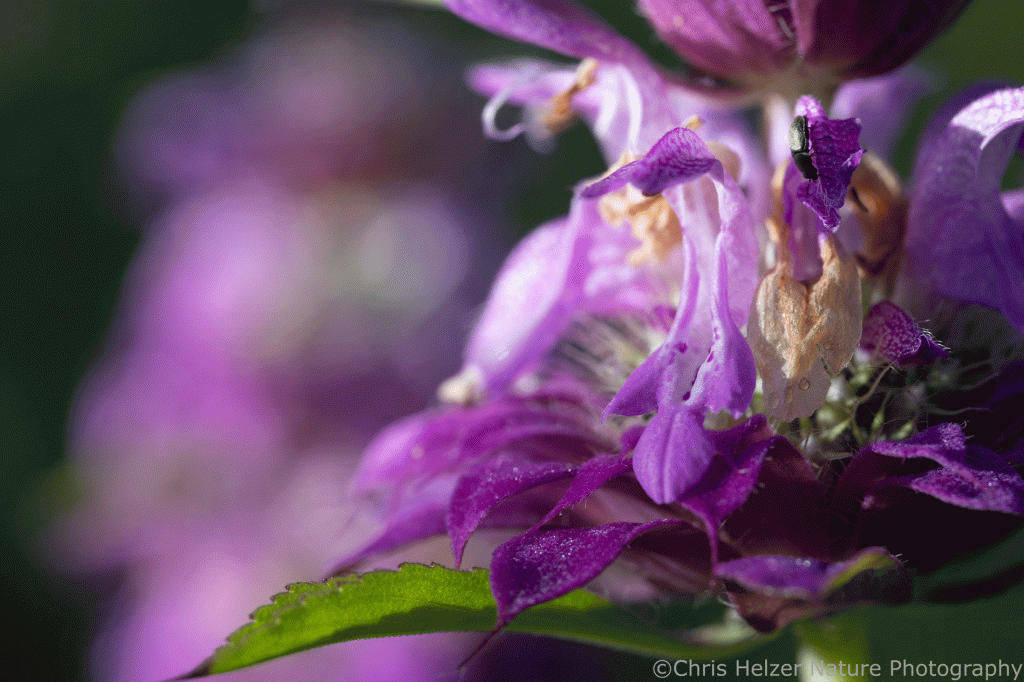
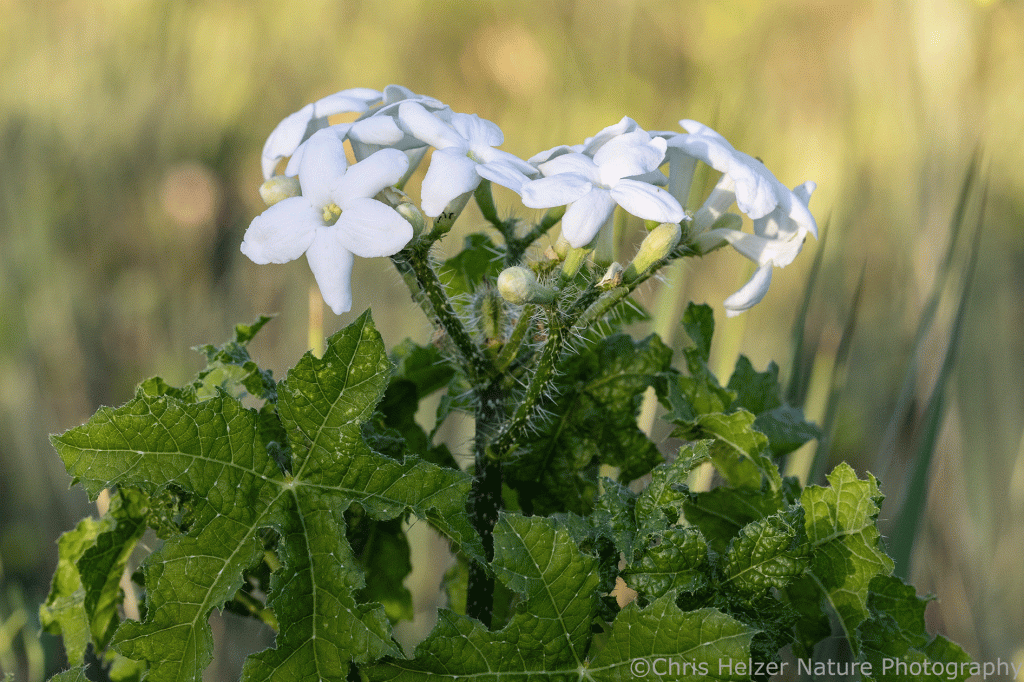


Boy, they grow prickly pear cacti really big in Texas! I guess I should have expected that. I think I was looking at Opuntia engelmannii, but what do I know?
A prickly pear cactus the size of an economy car is impressive. The good thing is that they’re pretty easy to avoid at that size. Of course, that only works if you stay away from them. If you lean in closely to photograph the flowers or their invertebrate visitors, there are some big and small spines that can easily end up embedded in a careless photographer. I still have a couple small ones in the side of my left index finger as I type this.


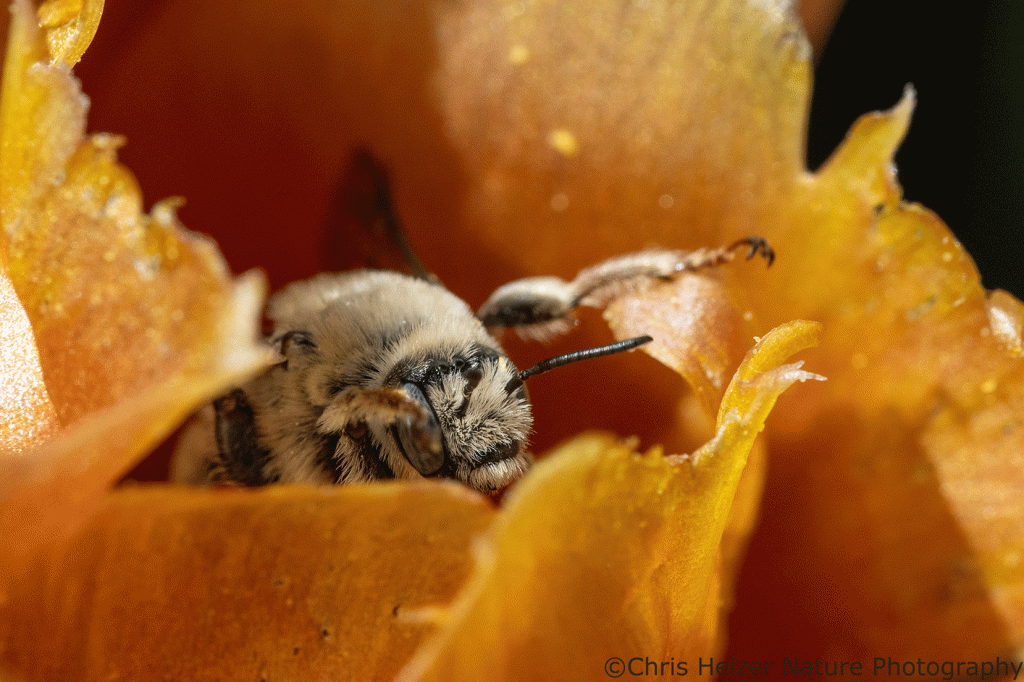

I hung around those cactus flowers quite a while during the middle of the afternoon, watching bees flying in and out and tracking beetles working their way sluggishly through the anthers. The sun was bright and made photography difficult, but I had my homemade diffuser with me (a flexible hoop with a very thin fabric stretched across it).
With my camera on a tripod, I managed to hold the diffuser in place and soften the light on flowers and insects crawling around the cacti. It wasn’t a foolproof method, both because the diffuser scared quite a few insects away and because trying to do too many things led to more encounters with cactus spines than I’d like to admit. That includes the spines that got stuck in the diffuser and then in my hand when I adjusted my grip on the diffuser. Seriously, Texas, what’s with all these sharp things?
In addition to bees feeding on already-bloomed flowers, I also saw some big leaf-footed bugs feeding on the flower buds that hadn’t yet opened. They had their long straw-like mouthparts inserted right into the buds and stayed there while I held my big diffuser above them and snapped their photos. Below are two photos of the same bug, showing its mouth stuck into the flower bud.
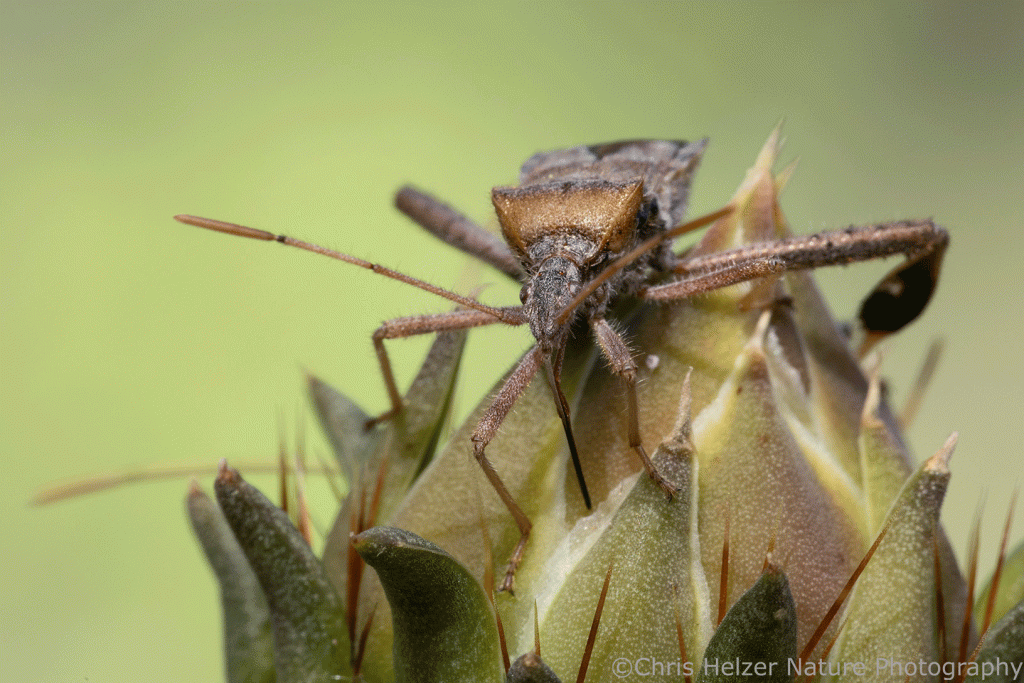

Between aid station visits to help Kim, I wandered around much of the day, looking at wildflowers, insects, birds, and whatever else I could find. Some of the wildflowers were species, or at least genera, I recognized, but I had to look others up. If it hadn’t been so stinking hot, it would have been a great day. It was still fun, but that’s because I wasn’t running more than two back-to-back marathons on rocky, winding trails in glaring heat.



Around mid morning, I spotted a roadrunner at one of the aid stations. It ran and then flew off just as I realized what I was looking at. Later in the afternoon, I saw it again as I was filling Kim’s water and helping her get back on the trail. My camera wasn’t close enough to be useful – and I was also busy doing my actual job for the day – so I missed the opportunity to photograph it. After Kim ran off, though, I stuck around to see if I could find it again. I did.
When I came across the roadrunner, it had just captured a lizard on (appropriately) an abandoned section of road being overrun with wildflowers and grasses. When the roadrunner spotted me, it flew off, but not far enough that I couldn’t slowly creep up close enough to get a photo of it on a wire before it flew again. I let it go.

Late in the day, as the sun was getting lower and many of the runners were just a little past half done with their run (excepting the one taken away by ambulance), I found some bare sand patches that looked promising. I photographed a tiger beetle hunting small prey and a wasp digging a hole. I assumed the wasp would soon bury paralyzed prey in that hole after laying an egg on it. Nearby, I found a few species of grasshoppers and some glowing grasses backlit against the sun.




I ended the daylight hours as I’d started them – with a spider. This one was building a web between some grass stems with the last of the light illuminating its legs. I said goodbye to it and headed back to the car to start sorting and processing photos on my computer while Kim kept running through the darkness. We each have our own individual skills and interests, I guess.

I mentioned earlier that spurge nettle, the plant that attacked us, has other common names. A few of those common names include bull nettle, tread-softly, and finger rot. Those all seem appropriate. They’d all look good on a warning sign, too. Come on, Texas!

What fun to see a collection of Texas photos. That Green Lynx spider is one of my favorites, and finding one on a white prickly poppy is perfect; I do love those flowers. I laughed at the spurge nettle, which I know as bull nettle. My introduction to that one came when I accidentally sat on one. You can imagine what that was like.
Your really spiny, unidentified cactus is Cylindropuntia leptocaulis, aka pencil cactus or Tasajillo. I was lucky enough to find some flowering in the hill country; both the flowers and fruits are lovely.
Thanks Linda! I sure wouldn’t want to sit on a bull nettle… I did think about you when I was down there because I know you, like me, enjoy getting low and close to flowers. I figured you’d probably understand my prickly situations.
Thanks for the cactus ID! It’s very pretty.
<
div dir=”ltr”>As a Texan prairie restorer, with lots of the “very spiny” cactus
Hi Chris! I’m still not seeing photos unless I post a comment. SOOOO – as always, thanks for sharing! I’m guessing this is an issue on my end, but I am not sure what changed (nothing I can recall). Stay safe out there in tornado season!!
Really good stuff. Thanks for doing this.
These are beautiful pictures, Chris! I hadn’t heard about all of the plant attacks you two encountered.
When we lived just outside of Bryan Texas, Orvin said that everything there tried to poke you, sting you, or bite you. I’m sure we’ve told you (maybe repeatedly) about cottonmouths in the yard and scorpions in the house among other exciting events.
Since that time, we’ve gotten used to the gentle Nebraska outdoors and take it for granted. The cold winters can be a good thing. 😉
I’m sorry our vegetation was less than welcoming to y’all, Chris. Thanks for visiting though!
Do I see Stinging Nettles? All covered by pretty white flowers. Those nettles are awful when you make contact with them!
Such interesting photos, as always, Chris. Texas is a lot like Arizona, where I have family living. It seems like everything wants to bite, sting, or poke a hole into you, but it sure is beautiful!